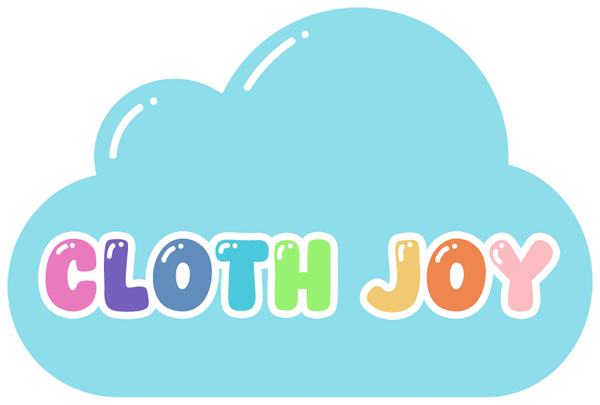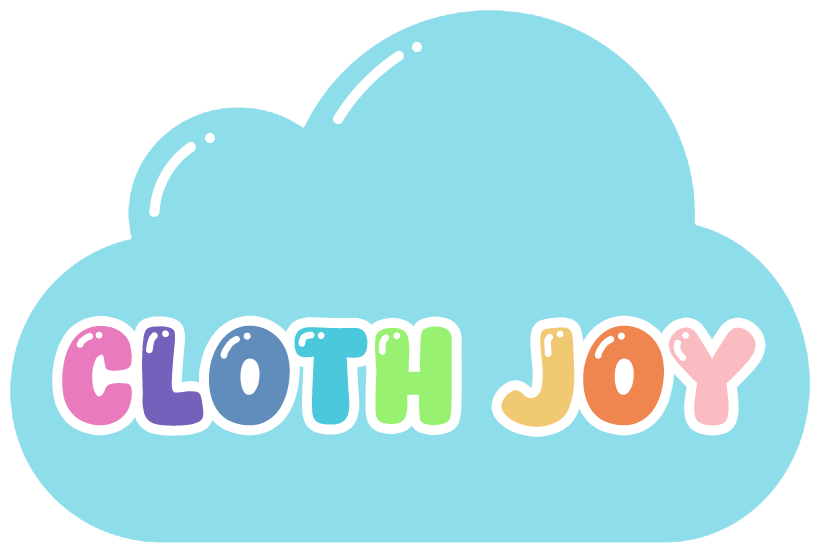Cloth with Kiana — Cloth Safe Diaper Creams
Share

So you've got your cloth diaper stash started and you run into your kiddo's behind getting a rash.
Your first instinct may be to grab whatever diaper cream you got at a baby shower or the one you've had your mind set on since before your kiddo was born. It's probably a highly regarded and well-known diaper cream, right?
But is it cloth safe?
When we're assessing if a diaper cream is "cloth safe" or "cloth friendly," what we're looking for is a cream that 1) will not stain and 2) will not cause repelling. Different folks may or may not worry about staining, but repellency is the big red flag to avoid. If your cloth diapers are repelling, that means that they are not absorbing anything your child is producing. This leads to leaks, blowouts, and way more outfit changes than any parent wants to deal with.
If you need just a quick, general reference or two on what to avoid or what to get, here's a handy little chart I made for you to save.

Now, if you're interested in the whys of the chart, scroll along!
Why avoid...
- Zinc oxide: This can cause staining and buildup, especially if the percentage of zinc oxide is over 15%. However, it's okay to use if you A) use a liner or B) use a tiny amount without a liner and then scrub it off your diaper before washing (though anticipate stains!). Some diaper rashes need the sure effectiveness of zinc oxide, so while generally you want to avoid it, there are work arounds if your kiddo needs it!
- Petroleum: This can cause major buildup and repelling. Many people use pocket diapers with AWJ (athletic wicking jersey) inside, and petroleum is too good at sticking to and gunking up synthetic fibers like AWJ and microfiber. Even the best wash routine with hot water will not get petroleum out of these fibers. On the flip side, petroleum (with hot water and a good wash routine) washes out of natural fibers quite nicely. Natural fibers will be things like hemp, cotton, and bamboo. So if your diapers have no synthetic fibers anywhere, you could get away with using it — otherwise, don't!
-
Lanolin: You may have heard of lanolin being used for wool diapers. It's a waxy substance used to waterproof the wool — and that's why it's not good for many types of diapers other than wool. Using it will lead to buildup and repelling, as the waterproof properties of it make it hard to get your diapers properly clean.
- Mineral oil: This is petroleum-based, so it can cause the same problems listed for petroleum above. It's also very greasy, which can make washing your cloth diapers harder than it needs to be.
- Heavy waxes: Think of stuff like paraffin. It's petroleum-based, so it'll lead to repelling!
- Heavy fragrances: This is a case-by-case thing, in my opinion. Many cloth-safe diaper creams (especially handmade) will have lovely, delicious fragrances to them ranging from classic baby powder to sugar cookies to fruit. But heavily fragranced products can be irritating to a baby's skin; they can also linger in the fibers of your diapers, leading to more rashes, buildup, and stinky diapers.
Why use...
- Coconut oil: While coconut oil can feel a little greasy, it washes out of cloth diapers very easily! It's also gentle on the skin and easily accessible.
- Tallow: Whether you're using beef or bison tallow, it also washes out easily. Tallow is a good choice for those more conscious of product ingredients but it's important to make sure none of the ingredients in the "unsafe" category are in your tallow's list!
- Beeswax: This is excellent for moisturizing baby skin without sticking to diaper fibers and gunking them up. If you choose a diaper cream that has beeswax in it but doesn't utilize a butt ton (no pun intended) of it, it should also wash out very easily. Beeswax is also considered anti-inflammatory and antibacterial, which are two amazing things to be for a diaper rash!
-
Boudreaux's GREEN Tube: Sometimes, you just need the strength that zinc oxide provides to help clear up a persistent diaper rash. The reason the cloth community recommends the GREEN tube over the original red one is that the GREEN tube is 16% zinc oxide, whereas the red tube is a whopping 40%! While I would recommend still using a liner with the GREEN tube to avoid stains, it's much less likely to cause buildup and repelling without a liner like the red tube would.
- Aloe: This is soothing, non-greasy, and gentle on the skin. Aloe is also cooling, which can provide some relief from a hot, uncomfortable rash. Please do note, though, that aloe alone may not be sufficient in combating a severe diaper rash.
- Cloth Joy's Joy Balm: The owner of Cloth Joy was meticulous in designing this balm. It's nutrient-rich, has amazing skin-absorption compatibility, and will not cause stains or repelling.
Overall, you really just need to check any diaper creams for zinc oxide and petroleum or anything petroleum-based. If you want/need to use a diaper cream that isn't considered cloth-safe, however, you'll want to use liners regularly.
Sometimes, a babysitter or a family member may unknowingly use an unsafe diaper cream without a liner, and this worries a lot of cloth diapering parents. However, one or two accidental applications are unlikely to cause any serious issues beyond staining. You can easily fix a slip-up like that with a toothbrush, a teeny bit of Dawn dish soap, and some elbow grease!
And that's about it! I hope this post helped you learn something new! You can save the chart above to keep for easy reference or to send to friends who may be new to cloth diapering. Never hesitate to reach out in our Facebook group or to send a message on the website with any questions you may have. ![]()
Until the next post!


